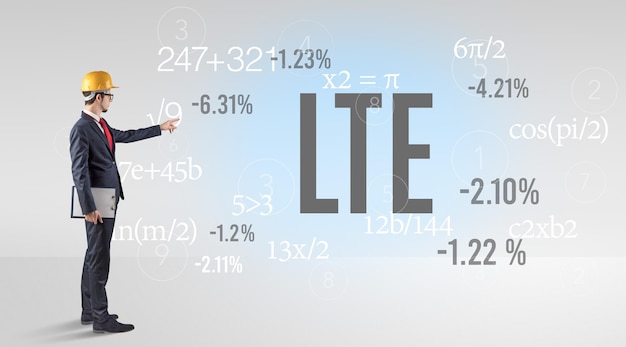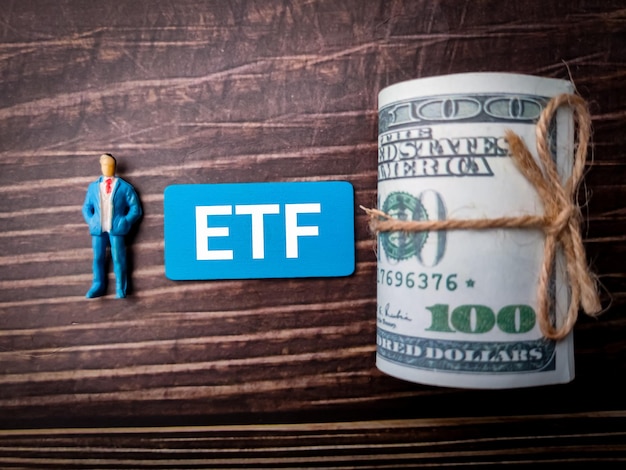Introduction:
Assistant’s Rule, also known as the Fundamental Theorem of Symmetric Functions, is a powerful mathematical result that connects the symmetric polynomials and the elementary symmetric functions.
This theorem
provides an important tool in algebraic and combinatorial mathematics, allowing us to derive deep insights about the structure of symmetric polynomials and their relationship with various other mathematical objects.
History:
The Assistant’s Rule, named after the mathematician Alfred Sloane, who formulated it in its modern form, was first introduced in the late 19th century by various mathematicians such as Cauchy, Jordan, and Möbius. Since then, it has undergone several refinements and generalizations, becoming an essential part of modern algebraic and combinatorial mathematics.
Statement:
The Assistant’s Rule states that for any set of variables x₁, x₂, …, xₙ, the value of a symmetric polynomial f(x₁, x₂, …, xₙ) is equal to the average of the values of the polynomial obtained by setting each variable equal to any other variable:
f(x₁, x₂, …, xₙ) = (1/n!) Σᵢ₁=₁ⁱ n [f(xₑ₁, xₑ₂, …, xₑₙ)]
Conclusion:
In conclusion, the Assistant’s Rule is a fundamental theorem in mathematics that has wide-ranging applications. It provides a powerful tool for understanding the behavior of symmetric polynomials and their connection with other mathematical concepts. Understanding this theorem is crucial for advanced study in algebraic, combinatorial, and symmetric functions.
Understanding Bonds and the Role of Bond Exchange-Traded Funds (ETFs) in a Diversified Portfolio
Bonds are a type of fixed-income investment where an investor loans money to an entity (typically a corporation or government) that borrows the funds for a defined period at a variable or fixed interest rate. Bonds play a crucial role in a diversified investment portfolio as they provide stability and income, acting as a counterbalance to the volatility often associated with stocks. The bond market is massive, with the global bond market valued at over $100 trillion as of 202Investing in bonds through individual issues or bond mutual funds can be time-consuming and costly, requiring significant resources for research and transaction costs.
Enter Exchange-Traded Funds (ETFs): A Modern Alternative to Traditional Bond Investing
Exchange-Traded Funds (ETFs) are a type of investment fund that holds multiple securities, just like mutual funds. However, ETFs trade on an exchange like individual stocks, allowing for greater flexibility and lower costs than traditional bond mutual funds. When it comes to bond ETFs, they provide investors with exposure to a diversified portfolio of bonds without the need for extensive research and management.
The Advantages of Bond ETFs
- Lower Costs: Bond ETFs have lower expense ratios compared to actively managed bond mutual funds, as they do not require a fund manager to manage the portfolio.
- Greater Flexibility: Investors can buy and sell bond ETFs throughout the trading day, allowing them to take advantage of real-time market movements.
- Tax Efficiency: Bond ETFs can be more tax efficient than bond mutual funds, as they do not require the frequent buying and selling of underlying bonds that may result in capital gains.
Best Bond ETFs to Consider Buying Now
Here are some of the best bond ETFs to consider for your investment portfolio:
iShares Core U.S. Aggregate Bond ETF (AGG)
- Provides investors with exposure to the U.S. investment-grade bond market.
- Has a low expense ratio of 0.04%.
- Broad diversification, with over 10,000 individual bonds.
Vanguard Total Bond Market ETF (BND)
- Provides investors with exposure to the total U.S. investment-grade bond market.
- Has a low expense ratio of 0.03%.
- Diversified portfolio consisting of over 8,000 individual bonds.
iShares iBoxx $ High Yield Corporate Bond ETF (HYG)
- Provides investors with exposure to the U.S. high-yield bond market.
- Has a higher risk profile but offers greater potential for yield compared to investment-grade bond ETFs.
- Expense ratio of 0.49%.
By investing in bond ETFs, investors can diversify their portfolio and capitalize on the advantages of lower costs, greater flexibility, and tax efficiency.
Conclusion
Bonds are a vital component of any well-diversified investment portfolio, providing stability and income. Exchange-Traded Funds (ETFs) offer investors an efficient alternative to traditional bond mutual funds, with lower costs, greater flexibility, and tax efficiency. With various options available, including broad market aggregate bond ETFs, high-yield bond ETFs, and international bond ETFs, investors have the opportunity to build a robust, diversified bond portfolio using ETFs.
Disclaimer
This article is for informational purposes only and should not be considered as investment advice. It’s essential to consult a financial advisor before making any investment decisions.

Understanding Bond ETFs: Exchange-Traded Funds (ETFs) are investment vehicles that trade on a stock exchange, much like individual stocks. However, unlike traditional stocks, an ETF holds a basket of assets instead of representing ownership in a single company. When it comes to
Bond ETFs
, these are specifically designed to provide investors with exposure to various types of bonds, including government, corporate, and international issues. The main appeal of bond ETFs lies in their
liquidity
and
diversification
benefits. Being exchange-traded means they can be bought or sold throughout the trading day, allowing investors to enter or exit their positions quickly. Additionally, by investing in a bond ETF, investors gain exposure to a broad range of bonds, reducing the risks associated with holding individual issues.
Moreover,
Bond ETFs
offer investors a cost-effective way to access the bond market. The expense ratios of most bond ETFs are lower than those of their mutual fund counterparts due to their passive management structure. This structure means the ETF simply tracks an index, such as the Barclays Aggregate Bond Index, rather than having a fund manager actively managing the portfolio. Another advantage of bond ETFs is their
transparency
. Investors can easily see what bonds are held within the fund and in what proportions, providing greater insight into their investment.
It is important to note that while bond ETFs offer many benefits, they also come with certain risks. These include
market risk
, which is the risk that the value of the ETF will decrease if interest rates rise or bond prices fall. Additionally,
liquidity risk
can be a concern for less actively traded ETFs, as it may be difficult to sell large positions without significantly impacting the price. Lastly, there are tax considerations to take into account when investing in bond ETFs. Because they are traded like stocks, capital gains taxes can be triggered whenever shares are sold, even if the investor has held them for only a short period of time.
In conclusion,
Bond ETFs
provide investors with a flexible, cost-effective, and transparent way to gain exposure to the bond market. However, they also come with certain risks that must be carefully considered before investing. By understanding these benefits and drawbacks, investors can make informed decisions about whether bond ETFs are the right choice for their investment objectives and risk tolerance.

Understanding Bond Exchange-Traded Funds (ETFs)
Bond ETFs are a type of Exchange-Traded Fund (ETF) that instead of holding a collection of stocks, invest in a diverse pool of bonds. These bonds can include both government and corporate bonds, as well as a variety of maturities and credit qualities. The primary objective of a Bond ETF is to provide investors with the opportunity to gain exposure to the bond market through a single security, while benefiting from the advantages that come with ETFs.
Comparison with Mutual Funds
Bond ETFs and mutual funds share some similarities, such as their role in providing investors access to professionally managed investment portfolios. However, they differ significantly in several ways:
Trading and Liquidity
One key distinction between Bond ETFs and mutual funds lies in their trading and liquidity characteristics. Bond ETFs are traded on an exchange, just like stocks, allowing investors to buy or sell shares throughout the trading day at the current market price. Conversely, mutual funds are priced and traded only once a day based on the closing net asset value (NAV).
Transparency and Taxation
Another important difference between Bond ETFs and mutual funds is their level of transparency and tax implications. Since Bond ETFs are publicly traded on an exchange, investors can see the current market price and net asset value in real-time. This transparency is not present with mutual funds, which only reveal their NAV at the end of each trading day.
Costs
Bond ETFs typically have lower expense ratios than mutual funds, making them a more cost-effective investment option for some investors. Bond ETFs also have no front-end sales charge or redemption fees, allowing for lower minimum investments.
Advantages of Investing in Bond ETFs
Liquidity: Bond ETFs offer investors the ability to buy or sell shares at any point during the trading day, making it easier to manage their bond portfolio and respond to changing market conditions.
Diversification:
Diversification is a crucial aspect of investing, and Bond ETFs allow investors to gain exposure to a broad range of bonds with different maturities, credit quality, issuers, and sectors. This can help reduce overall portfolio risk by spreading investments across various bond types.
Lower Costs:
Lower costs are a significant advantage of Bond ETFs over mutual funds. The lower expense ratios and absence of front-end sales charges make it easier for investors to accumulate wealth over time.
Transparency:
Transparency is another essential feature of Bond ETFs, as they provide real-time information about their holdings and market prices. This level of transparency can help investors make more informed investment decisions.

I Factors to Consider When Choosing Bond ETFs
When it comes to investing in bond Exchange-Traded Funds (ETFs), there are several crucial factors that investors should consider before making a decision. These factors can significantly impact the potential returns, risk profile, and overall investment experience.
Duration:
The duration of a bond ETF refers to the average length of time until the fund’s bonds mature. A longer duration means the portfolio’s sensitivity to interest rate changes is higher, and vice versa. Investors seeking higher yields and willing to take on more interest rate risk may choose longer-duration bond ETFs, while those with a lower risk tolerance might prefer shorter durations.
Credit Quality:
Credit quality is another critical factor to consider when choosing bond ETFs. This refers to the financial strength of the issuer of the bonds held in the fund. Higher credit quality bonds offer lower yields but are considered safer investments, while those with lower credit quality may provide higher yields but come with increased risk.
Interest Rates:
Interest rates play a significant role in the performance of bond ETFs. When interest rates rise, the price of existing bonds with lower yields decreases as investors can now earn higher yields from newly issued bonds. Conversely, when interest rates fall, bond prices generally increase as the yield advantage of existing bonds over new issues diminishes.
Sector Exposure:
Bond ETFs can provide exposure to various bond sectors, such as government bonds, corporate bonds, or high-yield bonds. Investors must consider their investment objectives and risk tolerance when selecting a bond ETF based on sector exposure. For instance, those seeking a more conservative investment may choose a government bond ETF, while investors looking for higher yields might prefer a high-yield bond ETF.
5. Expense Ratios:
Expense ratios refer to the fees charged by the issuer of a bond ETF to cover administrative and operational costs. Lower expense ratios mean that more of the investment return goes directly to the investor, while higher expense ratios reduce potential returns. Investors must compare the expense ratios of different bond ETFs and choose those with lower fees when possible.
6. Liquidity:
Liquidity refers to the ease of buying and selling a bond ETF without significantly impacting its price. Investors should consider the liquidity of a bond ETF, especially if they plan to buy or sell large positions, as illiquid funds might experience wider bid-ask spreads and potential price discrepancies.
7. Tax Considerations:
Tax considerations are essential when choosing bond ETFs, as the tax treatment of income and capital gains can vary significantly between different types of bonds and funds. For instance, municipal bond ETFs offer tax-exempt income for investors residing in specific states, while high-yield bond ETFs may generate more taxable income due to their higher yields. Investors should consult a tax professional for guidance on the potential tax implications of investing in bond ETFs.

Maturity: refers to the length of time until a bond reaches its final maturity date, at which point the principal is returned to the investor. The maturity period can vary greatly between bonds, ranging from short-term options with a maturity of just a few years, to long-term bonds with maturities stretching over several decades. Understanding the maturity of a bond is essential for investors as it directly impacts their investment horizon and the level of interest rate risk they are willing to take on.
Credit Quality:
Another crucial factor to consider when investing in bonds is credit quality, which refers to the financial strength and reliability of the issuer of the bond. Credit ratings agencies, such as Standard & Poor’s, Moody’s, or Fitch, assign credit ratings to bonds based on their assessment of the issuer’s ability to repay its debt. Bonds issued by governments and high-credit corporations are typically considered lower risk and receive high credit ratings, while those from less financially stable entities carry higher risk and correspondingly lower ratings.
Yield:
The yield of a bond is the income generated by the bond through regular interest payments, also known as coupons. The yield can be calculated in several ways, including the current yield or the yield to maturity (YTM). The current yield represents the annual interest payment as a percentage of the bond’s market price, while YTM takes into account both the coupon payments and the capital gain or loss expected upon maturity. Yield is a vital consideration for investors as it determines the income they receive from their investment.
Duration:
Duration is a measure of the sensitivity of a bond or bond portfolio to changes in interest rates. It represents the time it takes for a bond’s cash flows (interest payments and principal repayment) to replicate the initial investment. A longer duration indicates that a bond is more sensitive to changes in interest rates, meaning that its price will fluctuate more significantly when interest rates change. Understanding the duration of your investments can help you manage interest rate risk and adjust your portfolio accordingly.
Sector:
Lastly, the sector or type of bonds being invested in can have a significant impact on the investment’s characteristics and risks. Some common bond sectors include:
- Treasury bonds:
- Corporate bonds:
- Municipal bonds:
- Mortgage-backed securities:
- Government agency bonds:
are issued by the U.S. government and are considered low-risk investments due to their creditworthiness.
represent debt issued by corporations and come with varying levels of risk depending on the creditworthiness of the issuing company.
are issued by state and local governments, offering potential tax advantages for investors.
are asset-backed bonds that derive their cash flows from mortgage payments.
are issued by government entities such as the Federal National Mortgage Association (Fannie Mae) and the Federal Home Loan Mortgage Corporation (Freddie Mac).

Top Bond ETFs to Consider Buying Now
Bonds have long been a staple in every investor’s portfolio due to their ability to provide a stable source of income and act as a safe-haven during market turbulence. Exchange-Traded Funds (ETFs) offer an efficient way to access various bond markets, providing diversification and liquidity that was once only available to institutional investors. With interest rates on the rise, it’s essential to identify the top bond ETFs that could deliver solid returns while minimizing risks. Here are some promising options for investors looking to add bond exposure to their portfolios.
i. iShares Core U.S. Aggregate Bond ETF (AGG)
This popular bond ETF tracks the Bloomberg Barclays U.S. Aggregate Bond Index, making it an excellent choice for investors looking for broad exposure to the U.S. bond market. With a sizeable asset base and a low expense ratio, AGG offers diversification across various sectors, including Treasuries, agency mortgage-backed securities (MBS), corporate bonds, and other investment-grade and high-yield issues.
ii. iShares 20+ Year Treasury Bond ETF (TLT)
For investors seeking a longer-duration bond ETF, the iShares 20+ Year Treasury Bond ETF (TLT) could be an attractive option. As its name implies, TLT tracks the performance of U.S. Treasury bonds with maturities greater than 20 years. With increasing interest rates, longer-term Treasuries typically experience larger price swings; however, they also offer higher yields that can help offset inflation and provide a hedge against stocks during market downturns.
iii. iShares International Treasury Bond ETF (IGOV)
For global investors, the iShares International Treasury Bond ETF (IGOV) provides exposure to a diversified portfolio of international bonds denominated in various currencies, including U.S. dollars, Euros, and Japanese Yen. By investing in bonds issued by governments around the world, IGOV offers investors a hedge against U.S. dollar risk and an opportunity to generate income from global fixed-income markets while potentially mitigating home-country risks.
iv. iShares Short-Term Corporate Bond ETF (IHSG)
Lastly, for those seeking shorter-term bond exposure and income generation, the iShares Short-Term Corporate Bond ETF (IHSG) could be a suitable option. IHSG tracks the investment results of an index composed of U.S. dollar-denominated corporate bonds with short maturities. By focusing on shorter-term corporate bonds, investors can potentially achieve higher yields than Treasuries while maintaining relatively low duration and interest rate risk.

iShares Core U.S. Aggregate Bond ETF (AGG): This index fund tracks the performance of the U.S. investment-grade bond market, which is one of the largest and most liquid markets in the world. It offers broad exposure to a diversified pool of high-quality bonds, including U.S. Treasuries, government-related and corporate bonds. Investors choose AGG for its solid income potential and low correlation with stocks, making it an excellent core holding for a well-diversified investment portfolio.
Vanguard Total Bond Market Index Fund ETF Shares (BND)
Another broad-market fund, BND aims to track the performance of the U.S. investment-grade bond market, similar to AGG. However, investors often choose Vanguard for its lower expense ratios compared to iShares. This fund also offers a high level of diversification across various sectors and maturities, which can help minimize overall risk.
iShares iBoxx $ High Yield Corporate Bond ETF (HYG)
Unlike the previous funds, iShares iBoxx $ High Yield Corporate Bond ETF (HYG) is an actively managed fund that focuses on high-yield corporate bonds, also known as “junk bonds.” HYG offers the opportunity for higher yield compared to investment-grade bonds but comes with a greater level of risk. Investors should carefully consider their risk tolerance before investing in this fund, as the credit quality and liquidity of high-yield bonds can be volatile.
iShares 20+ Year Treasury Bond ETF (TLT)
For income-focused investors, this fund invests in long-term U.S. Treasury bonds, providing a stable source of income through regular interest payments. With an investment strategy that targets the longer end of the yield curve, TLT can help diversify a portfolio by providing exposure to bonds with different maturities and interest rate risk.
iShares Short-Term Corporate Bond ETF (ISFC)
Ideal for those seeking lower duration and less interest rate risk, ISFC focuses on short-term investment-grade corporate bonds. The shorter maturity allows this fund to offer lower interest rate sensitivity compared to longer-duration bond funds, making it a good choice for investors who want to minimize their exposure to interest rate fluctuations.
iShares International Corporate Bond ETF (IBND)
A global bond ETF, IBND provides diversification through international investment opportunities. This fund invests in corporate bonds issued by companies located outside the United States, offering potential benefits from currency appreciation and a wider range of industries and sectors.

Artificial Intelligence (AI)
or
Machine Learning (ML)
, it is essential to be aware of the potential risks and considerations that come with it. One major concern is
Data Privacy
. With AI systems, large amounts of data are required to learn and improve, raising questions about how this data will be collected, stored, and protected.
Bias and Discrimination
is another significant issue. AI systems learn from data, which may contain inherent biases that can result in unfair or discriminatory outcomes. It’s crucial to ensure that the data used is diverse and representative to avoid these issues.
Another risk is
Job Displacement
. Automation and AI can significantly impact the labor market, leading to job losses in certain sectors. While new jobs may be created, there is a need to prepare the workforce for these changes and provide adequate training programs.
Safety and Ethics
are also essential considerations. AI systems can make decisions that have significant consequences, making it important to establish clear guidelines for their use and ensure they align with ethical standards.
Transparency and Explainability
are crucial as well. Users must understand how AI systems work and the reasoning behind their decisions to build trust and confidence in the technology.
Lastly, there is a need for
Regulation and Oversight
. Governments and regulatory bodies must establish guidelines to ensure that AI systems are used ethically, transparently, and responsibly. These regulations will help mitigate risks, protect privacy, and promote fairness and non-discrimination in the use of AI.

Interest rate risk, also known as duration risk, refers to the risk that the value of a bond or an investment portfolio decreases when interest rates rise. When interest rates increase, the present value of future cash flows from the bond is worth less than it was before, causing the bond’s price to drop. This risk is significant for bondholders because they may need to sell their bonds before maturity to meet their financial obligations. A sharp increase in interest rates can result in substantial losses for investors.
Credit risk
Credit risk, on the other hand, is the risk that the issuer of a bond or any debt security may default on its obligations. This means that the borrower may not be able to repay the principal and interest on time, or at all. Credit risk is a major concern for investors because it can result in a complete loss of their investment. The probability of default varies among issuers based on their creditworthiness, or their ability to repay debt.
Liquidity risk
Liquidity risk, also known as market risk, is the potential inability to sell a bond or exchange-traded fund (ETF) easily without significantly impacting its price. This risk is important because investors may need to sell their securities in order to meet their financial obligations or take advantage of new investment opportunities. Liquidity risk is influenced by factors such as the size and frequency of trades, the availability of buyers and sellers, and the volatility of the security’s price.

VI. Conclusion
In today’s digital age, it is essential for businesses to have an online presence that stands out from the competition. One effective way to achieve this is through Search Engine Optimization (SEO). SEO is a set of strategies and techniques aimed at improving a website’s visibility on search engines like Google. By optimizing various elements of a website, such as its content, structure, and metadata, businesses can attract more organic traffic, which can lead to increased brand awareness, credibility, and sales.
The Importance of Keywords
One of the most critical aspects of SEO is keyword research and optimization. Keywords are the phrases and terms that users type into search engines when looking for information or products online. By identifying relevant keywords and incorporating them naturally into a website’s content, businesses can improve their chances of ranking higher in search engine results pages (SERPs).
On-Page Optimization
Another essential component of SEO is on-page optimization. This involves optimizing various elements on a website, such as its title tags, meta descriptions, header tags, and URL structure, to make them more search engine-friendly. Properly optimized on-page elements can help search engines better understand the content and purpose of a website, which can lead to higher rankings.
Off-Page Optimization
Off-page optimization refers to the strategies and techniques used to improve a website’s search engine visibility through external factors, such as backlinks and social media signals. Backlinks, which are links from other websites to a business’s website, can significantly impact its search engine rankings. Google and other search engines view backlinks as votes of confidence, so the more high-quality backlinks a website has, the higher it is likely to rank.
Technical SEO
Finally, technical SEO involves optimizing a website’s backend structure and functionality to make it easier for search engines to crawl and index its content. This can include improving website speed, mobile responsiveness, XML sitemap creation, and schema markup implementation. Properly executed technical SEO can help ensure that a website is easily accessible and understandable to search engines, which can lead to higher rankings and improved overall performance.
In Conclusion
In conclusion, SEO is a powerful and effective way for businesses to improve their online presence and attract more organic traffic. By implementing strategies such as keyword research and optimization, on-page optimization, off-page optimization, and technical SEO, businesses can significantly improve their search engine rankings and reap the benefits of increased brand awareness, credibility, and sales.

Summary of the best Bond Exchange-Traded Funds (ETFs) to consider buying now depends on various factors such as performance, diversification benefits, and risk-reward profile. Among the top contenders are:
iShares Core U.S. Aggregate Bond ETF
With an impressive track record and broad market exposure, this ETF is a popular choice for income-seeking investors. It tracks the performance of the U.S. investment-grade bond market, providing diversification across various sectors and maturities.
Vanguard Total Bond Market ETF
Another strong contender is this ETF, which mirrors the performance of the U.S. investment-grade bond market. It offers broad diversification and a lower expense ratio compared to many competitors, making it an attractive option for long-term investors.
iShares iBoxx $ High Yield Corporate Bond ETF
For those seeking higher yields and a more aggressive approach, this ETF tracking the iBoxx $ High Yield Markets Index could be an interesting choice. It focuses on high-yield corporate bonds, offering potential for capital appreciation and higher income but also increased risk.
iShares 20+ Year Treasury Bond ETF
Finally, investors looking for a more defensive stance and long-term capital appreciation might consider this ETF. It tracks the performance of 20+ year U.S. Treasury bonds, providing a safe haven in uncertain markets while offering attractive yields.
Importance of Individual Considerations
When selecting the right Bond ETFs for your portfolio, it’s essential to evaluate individual financial goals, risk tolerance, and investment horizon. These factors play a significant role in determining the optimal ETF mix for your unique situation.
Financial Goals
Your financial goals, such as retirement income or capital appreciation, will help you decide which ETFs align best with your objectives. For example, if you’re focusing on income generation, a higher-yielding ETF might be more suitable.
Risk Tolerance
Your risk tolerance will influence your decision in various ways, including the choice of ETFs with varying maturities and credit qualities. A more conservative investor may prefer shorter-term or investment-grade bonds, while a more aggressive investor might opt for longer-term or high-yield bonds.
Investment Horizon
Lastly, your investment horizon is a crucial factor when deciding which bond ETFs to consider. Short-term investors might prefer more liquid and lower-risk options, whereas long-term investors could benefit from a diversified portfolio that includes both short- and long-term bonds.





